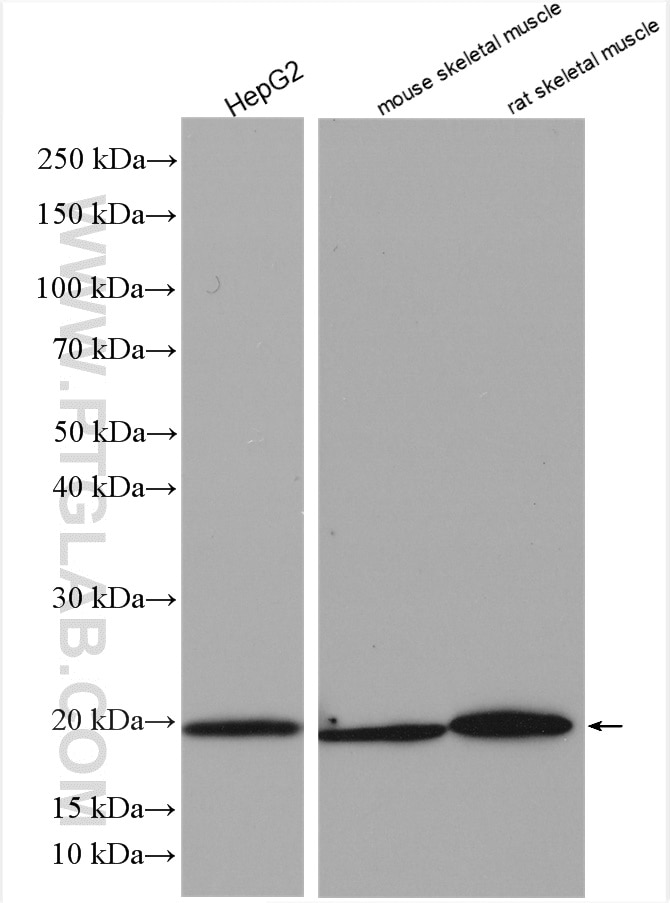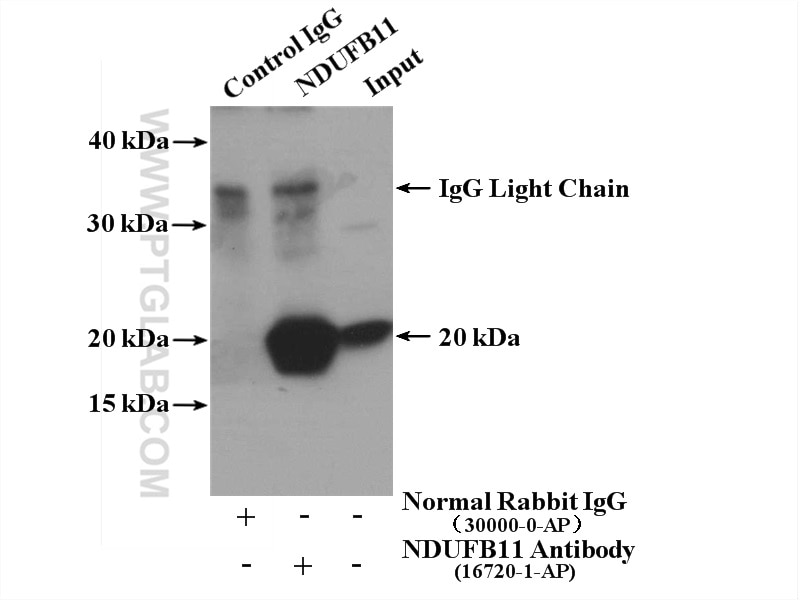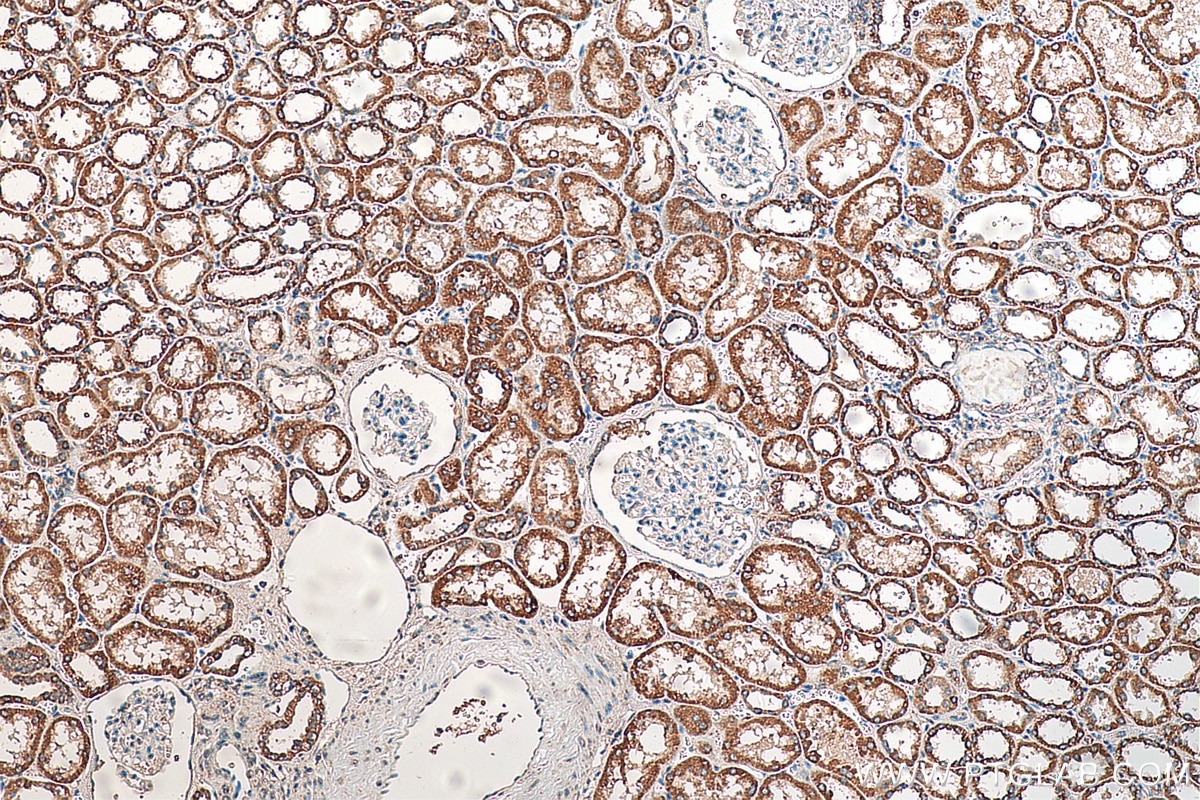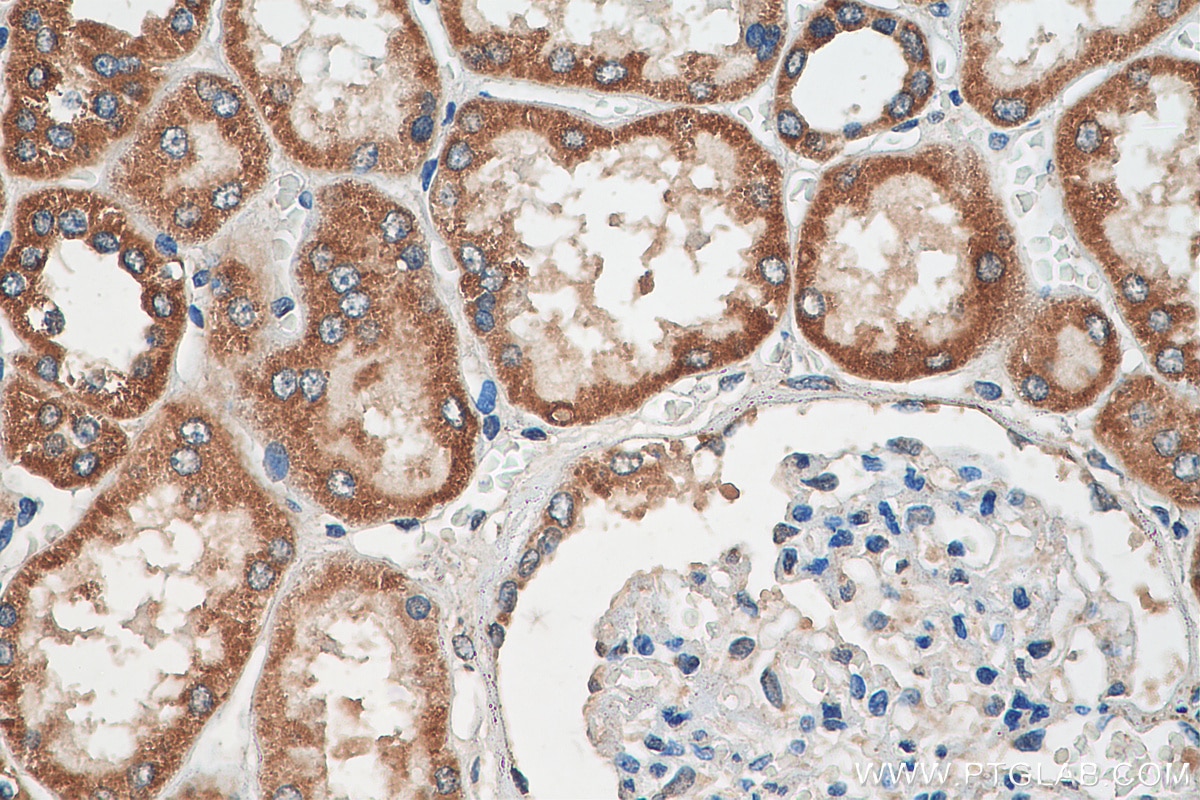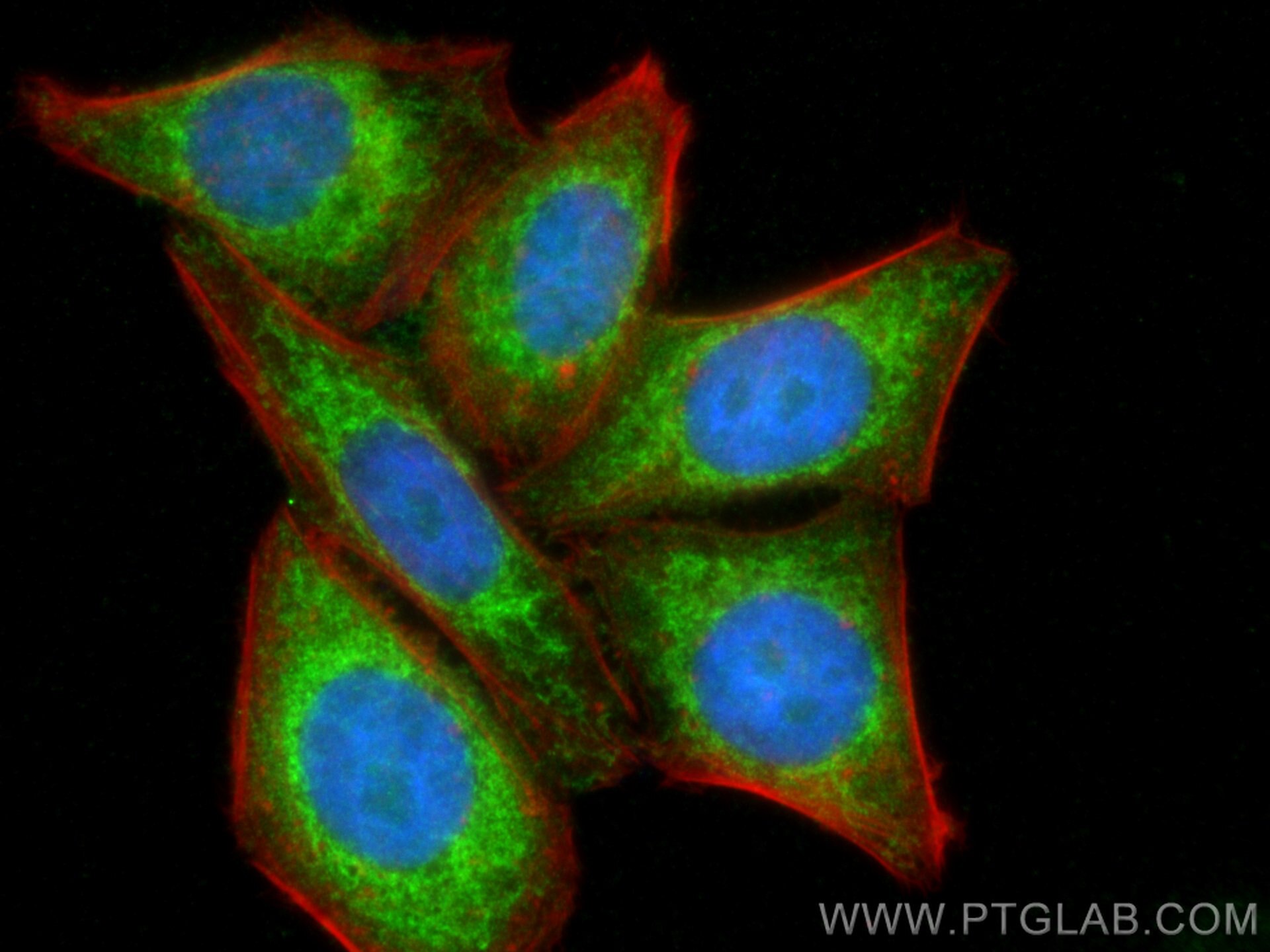- Phare
- Validé par KD/KO
Anticorps Polyclonal de lapin anti-NDUFB11
NDUFB11 Polyclonal Antibody for WB, IHC, IF/ICC, IP, ELISA
Hôte / Isotype
Lapin / IgG
Réactivité testée
Humain, rat, souris
Applications
WB, IHC, IF/ICC, IP, ELISA
Conjugaison
Non conjugué
N° de cat : 16720-1-AP
Synonymes
Galerie de données de validation
Applications testées
| Résultats positifs en WB | cellules HepG2, tissu de muscle squelettique de rat, tissu de muscle squelettique de souris |
| Résultats positifs en IP | tissu de muscle squelettique de souris, |
| Résultats positifs en IHC | tissu rénal humain, il est suggéré de démasquer l'antigène avec un tampon de TE buffer pH 9.0; (*) À défaut, 'le démasquage de l'antigène peut être 'effectué avec un tampon citrate pH 6,0. |
| Résultats positifs en IF/ICC | cellules HepG2, |
Dilution recommandée
| Application | Dilution |
|---|---|
| Western Blot (WB) | WB : 1:1000-1:4000 |
| Immunoprécipitation (IP) | IP : 0.5-4.0 ug for 1.0-3.0 mg of total protein lysate |
| Immunohistochimie (IHC) | IHC : 1:50-1:500 |
| Immunofluorescence (IF)/ICC | IF/ICC : 1:50-1:500 |
| It is recommended that this reagent should be titrated in each testing system to obtain optimal results. | |
| Sample-dependent, check data in validation data gallery | |
Applications publiées
| KD/KO | See 3 publications below |
| WB | See 13 publications below |
Informations sur le produit
16720-1-AP cible NDUFB11 dans les applications de WB, IHC, IF/ICC, IP, ELISA et montre une réactivité avec des échantillons Humain, rat, souris
| Réactivité | Humain, rat, souris |
| Réactivité citée | Humain, souris |
| Hôte / Isotype | Lapin / IgG |
| Clonalité | Polyclonal |
| Type | Anticorps |
| Immunogène | NDUFB11 Protéine recombinante Ag10159 |
| Nom complet | NADH dehydrogenase (ubiquinone) 1 beta subcomplex, 11, 17.3kDa |
| Masse moléculaire calculée | 163 aa, 18 kDa |
| Poids moléculaire observé | 18-20 kDa |
| Numéro d’acquisition GenBank | BC107805 |
| Symbole du gène | NDUFB11 |
| Identification du gène (NCBI) | 54539 |
| Conjugaison | Non conjugué |
| Forme | Liquide |
| Méthode de purification | Purification par affinité contre l'antigène |
| Tampon de stockage | PBS with 0.02% sodium azide and 50% glycerol |
| Conditions de stockage | Stocker à -20°C. Stable pendant un an après l'expédition. L'aliquotage n'est pas nécessaire pour le stockage à -20oC Les 20ul contiennent 0,1% de BSA. |
Informations générales
NDUFB11(NADH dehydrogenase [ubiquinone] 1 beta subcomplex subunit 11, mitochondrial) is also named as neuronal protein 17.3(Np17.3) and belongs to the complex I NDUFB11 subunit family. This protein is involved in the transfer of electrons from NADH to the respiratory chain and play a role in the growth, maintenance, and survival of neurons. NDUFB11 has 2 isoforms produced by alternative splicing.
Protocole
| Product Specific Protocols | |
|---|---|
| WB protocol for NDUFB11 antibody 16720-1-AP | Download protocol |
| IHC protocol for NDUFB11 antibody 16720-1-AP | Download protocol |
| IF protocol for NDUFB11 antibody 16720-1-AP | Download protocol |
| IP protocol for NDUFB11 antibody 16720-1-AP | Download protocol |
| Standard Protocols | |
|---|---|
| Click here to view our Standard Protocols |
Publications
| Species | Application | Title |
|---|---|---|
Mol Cell Identification of TMEM126A as OXA1L-interacting protein reveals cotranslational quality control in mitochondria | ||
EMBO J Respiratory supercomplexes act as a platform for complex III-mediated maturation of human mitochondrial complexes I and IV. | ||
Am J Hum Genet Mutations in NDUFB11, Encoding a Complex I Component of the Mitochondrial Respiratory Chain, Cause Microphthalmia with Linear Skin Defects Syndrome.
| ||
iScience Mutational burden of XPNPEP3 leads to defects in mitochondrial complex I and cilia in NPHPL1 | ||
J Biol Chem Complex I mutations synergize to worsen the phenotypic expression of Leber's hereditary optic neuropathy. | ||
Clin Genet A novel mutation in NDUFB11 unveils a new clinical phenotype associated with lactic acidosis and sideroblastic anemia. |
